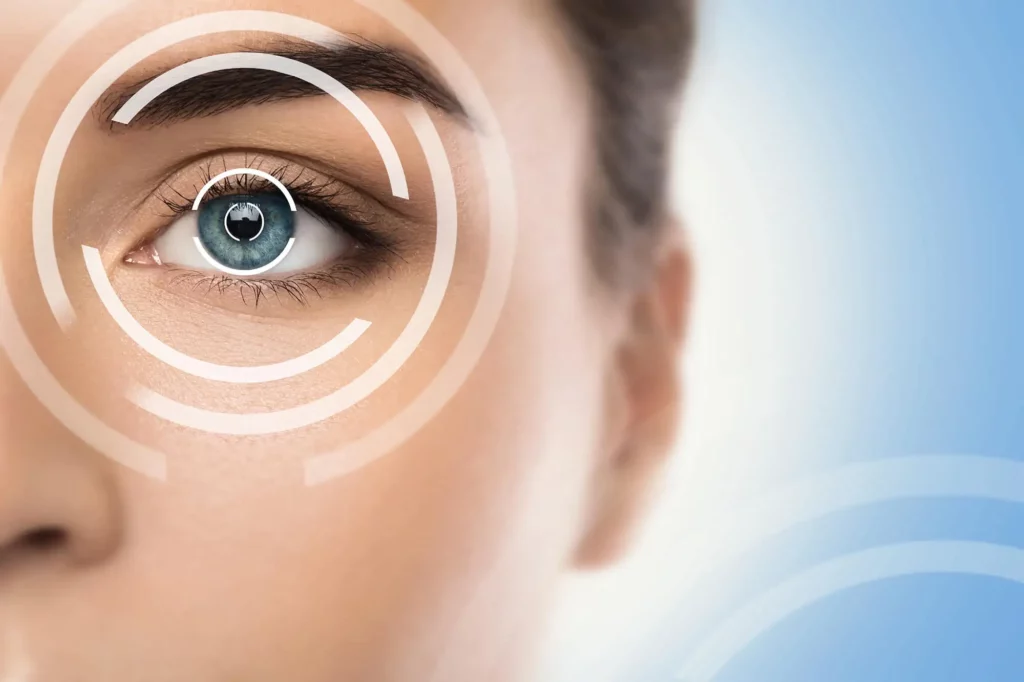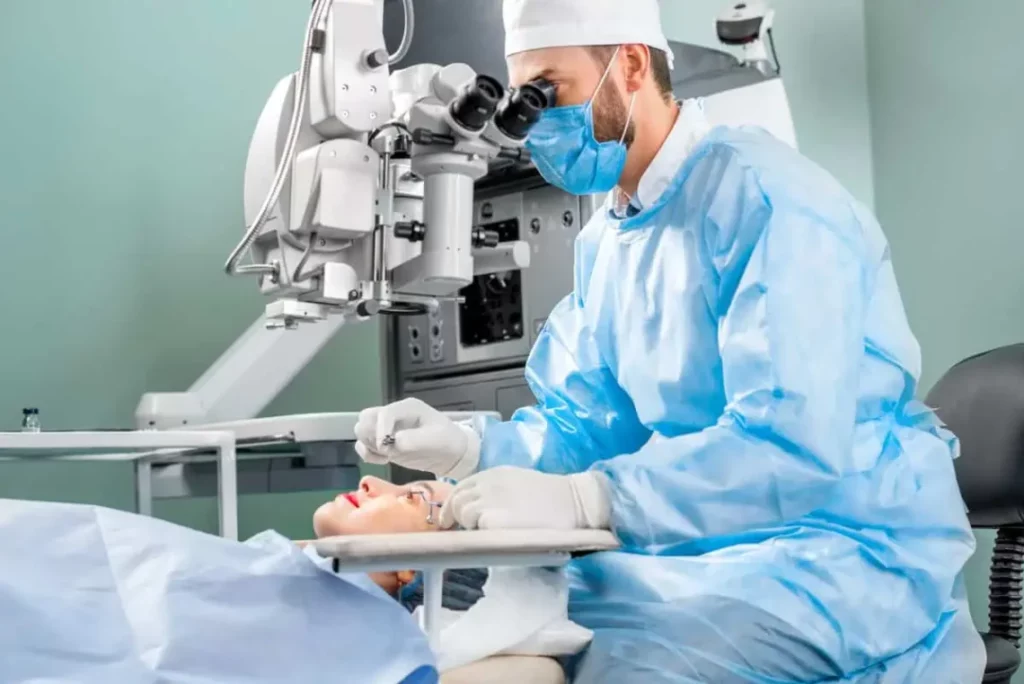Cataract surgery is a common procedure aimed at restoring vision for patients affected by cataracts. This article will guide you through what to expect from the surgery process in Sydney, exploring how it can significantly enhance your vision and transform your quality of life.
Understanding Cataract Surgery
The Basics of Cataract Surgery
Cataract surgery occur when the lens of the eye becomes cloudy, leading to blurred vision, glare, and difficulties in seeing at night. The condition is particularly prevalent among older adults, but it can also result from factors such as diabetes, prolonged use of corticosteroids, and certain eye injuries. Symptoms can develop gradually, often making it difficult for individuals to notice the changes in their vision until they significantly impact daily activities.
Cataract surgery involves removing the cloudy lens and typically replacing it with an artificial intraocular lens (IOL). This outpatient procedure aims to restore clear vision, making it one of the safest and most effective surgical procedures available today. Patients usually experience a rapid improvement in their vision post-surgery, allowing them to return to their normal routines, including reading, driving, and enjoying hobbies that may have been hindered by their cataracts.
The Role of Modern Technology in Cataract Surgery
Advancements in technology have revolutionized cataract surgery. Techniques such as phacoemulsification, which uses ultrasound waves to break apart the cataract, allow for less invasive procedures that promote quicker recovery times. This method minimizes tissue damage and reduces the risk of complications, making it a preferred choice among ophthalmologists worldwide.
Additionally, modern imaging techniques, such as optical coherence tomography (OCT), help surgeons plan the surgery with pinpoint accuracy. The use of femtosecond lasers further enhances precision, allowing for a more controlled experience during the procedure. These lasers can create precise incisions in the cornea, fragment the cataract, and even assist in the placement of the IOL, leading to improved outcomes and greater patient satisfaction. Furthermore, the integration of advanced IOL options, such as multifocal and toric lenses, allows for personalized treatment plans that can address specific vision needs, reducing dependence on glasses after surgery.

Preparing for Cataract Surgery in Sydney
Initial Consultation and Eye Examination
Your journey towards improved vision starts with an initial consultation with an ophthalmologist. During this appointment, your doctor will perform a comprehensive eye examination, assessing your vision, eye health, and the severity of the cataract.
Various tests will be conducted to measure the curvature of your cornea and the size of your pupil and iris. These evaluations help determine the most suitable type of IOL and surgical approach needed for your specific condition. Additionally, your ophthalmologist may discuss your medical history, including any previous eye surgeries or existing health issues, to tailor the treatment plan to your unique needs. This thorough assessment not only provides a clearer picture of your eye health but also helps to alleviate any concerns you may have about the surgery process. Read more about the cornea at https://eye.hms.harvard.edu/cornea
Pre-Surgery Instructions and Guidelines
Once cleared for surgery, your doctor will provide specific pre-operative instructions. These may include discontinuing certain medications, particularly blood thinners, as well as recommendations on avoiding strenuous activities, alcohol, and smoking in the days leading up to your surgery.
It is essential to arrange for someone to drive you home post-surgery, as your vision may be temporarily impaired. Understanding and following these guidelines will help ensure a smoother surgical experience and a successful outcome. Furthermore, it is advisable to prepare your home for recovery by organizing a comfortable space where you can rest and have easy access to necessary items, such as medications and snacks. Having a support system in place, whether it’s family or friends, can also provide emotional comfort and practical assistance during your recovery period, making the transition to clearer vision much more manageable.
The Cataract Surgery Procedure
Step-by-Step Process of Cataract Surgery
Cataract surgery generally takes about 15 to 30 minutes. You will be given a local anesthetic to numb the eye, and sedation may also be provided to help you relax. The surgeon will first make a small incision in your cornea to access the eye’s interior.
Through this incision, the cloudy lens is carefully broken apart using ultrasound and then gently removed from the eye. The surgeon will then implant the chosen intraocular lens to replace the natural lens that was removed.
After the lens is positioned correctly, the incision is usually left to heal naturally without stitches. The entire surgery is typically painless, and many patients report immediate improvements in their vision.
Anesthesia and Patient Comfort During Surgery
Comfort during cataract surgery is a top priority. Local anesthesia is commonly used, ensuring that the eye is numb while allowing you to remain awake. Some patients may also receive mild sedatives to help ease anxiety.
Surgeons and surgical teams are trained to communicate throughout the procedure, providing reassurance and updates. Many patients find that the experience is not only comfortable but also surprisingly quick, allowing for a relaxed atmosphere despite the setting.
In addition to the anesthesia, the surgical environment is designed to minimize stress. The operating room is typically equipped with soothing lighting and calming music, which can help to create a more pleasant experience. Patients are encouraged to bring a family member or friend for support, which can further enhance feelings of comfort and security during the procedure.
Post-operative care is also an essential part of the process. After the surgery, patients are usually taken to a recovery area where they can rest for a short period. Eye drops may be prescribed to prevent infection and reduce inflammation, and follow-up appointments are scheduled to monitor healing and ensure the best possible outcome. Understanding these steps can help demystify the procedure and alleviate any concerns about the surgery itself.
Post-Surgery Expectations
Recovery Period and Post-Operative Care
After cataract surgery, recovery typically begins immediately. You may rest in a recovery area for a short while before being discharged. It is common for patients to experience blurry vision, sensitivity to light, and some mild discomfort as the eyes adjust and heal. During this time, it’s essential to have someone accompany you home, as your vision may not be clear enough for safe driving. You might also want to prepare your home environment to ensure comfort during your recovery, such as setting up a cozy space with easy access to necessities and minimizing exposure to bright lights.
Post-operative care is vital for optimal recovery. Your doctor will schedule follow-up appointments to monitor your healing and may prescribe eye drops to aid recovery. These drops are crucial in preventing infection and reducing inflammation. It’s crucial to avoid strenuous activities and not rub or push on the eye during this initial healing period. Additionally, wearing sunglasses outdoors can help shield your eyes from bright sunlight and dust, which may irritate them. Many patients find that incorporating gentle activities, such as light reading or listening to audiobooks, can help pass the time while they recover without straining their eyes. To learn more about how to take care of yourself after surgery click here.
Potential Risks and Complications
While cataract surgery is generally safe, as with any medical procedure, there are potential risks involved. Some complications that could occur include infection, bleeding, and retinal detachment. However, serious complications are rare. It’s important to understand that the benefits of improved vision often outweigh these risks, and advancements in surgical techniques have made cataract surgery one of the most commonly performed and successful procedures in modern medicine.
Awareness and vigilance during your recovery can significantly reduce the risks. Any severe pain, a sudden decrease in vision, or an increase in redness should prompt a call to your ophthalmologist. Most patients, however, report no complications and a smooth recovery. Engaging in a supportive community, whether through online forums or local support groups, can also provide encouragement and shared experiences that help ease any anxiety about the recovery process. Sharing stories and tips with others who have undergone the same procedure can be both reassuring and informative, making the journey smoother for everyone involved.

The Transformation of Your Vision
Immediate and Long-Term Vision Improvements
One of the most rewarding aspects of cataract surgery is the immediate improvement in vision that many patients experience following the procedure. Enhanced clarity and contrast can make a significant difference in daily activities such as reading, driving, and enjoying nature. Patients often describe the experience as if a veil has been lifted, revealing vibrant colors and intricate details that had previously been obscured by the cloudiness of cataracts. This newfound clarity can transform mundane tasks into enjoyable experiences, allowing individuals to appreciate the world around them in ways they had long forgotten.
Long-term results are often equally impressive. Many patients find that not only does their vision improve post-surgery, but it often remains stable for years to come. The type of intraocular lens used can further enhance visual outcomes, especially in various lighting conditions. For instance, some lenses are designed to reduce glare and improve vision at night, which can be particularly beneficial for those who enjoy evening activities or need to drive after dark. Furthermore, advancements in lens technology mean that patients can choose options tailored to their specific lifestyle needs, ensuring that their vision remains sharp and clear for years ahead.
Quality of Life Enhancements After Cataract Surgery
Beyond the physical improvements in vision, cataract surgery can lead to a profound positive impact on quality of life. Patients often report a return to activities they love, such as gardening, watching movies, and socializing with family and friends, all made easier by clearer vision. The joy of seeing loved ones’ faces without distortion or blur can rekindle connections that may have felt strained due to vision loss. Moreover, many individuals find that they are more willing to engage in social activities, leading to improved mental well-being and a greater sense of community.
Ultimately, cataract surgery not only corrects vision but also contributes to increased independence and overall satisfaction in life. Whether it involves reclaiming hobbies or simply navigating daily tasks, the transformation can be life-changing. Patients often express newfound confidence in their ability to perform everyday activities, such as shopping or cooking, without the fear of stumbling or missing important details. This renewed sense of autonomy not only enhances their daily routines but also empowers them to explore new interests and experiences that they may have previously shied away from due to their impaired vision.
In conclusion, cataract surgery in Sydney offers a pathway to restored vision and improved quality of life. Understanding the process, preparing adequately, and having realistic expectations can help ensure a successful outcome and the joyous return to clarity.
Related : The Complete Guide to Cataracts Surgery: From Diagnosis to Recovery

